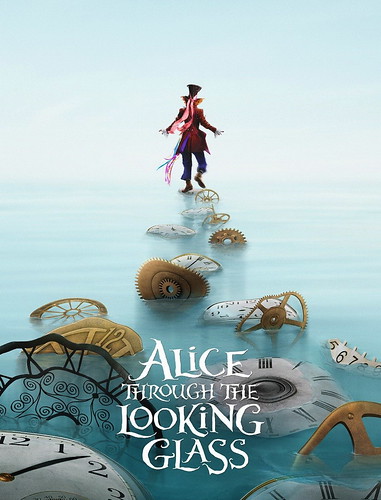
You may not know , or maybe you do...(hahaha) , but I am a huge Tim Burton fan and yes, Alice in Wonderland addict from way back when..lol So, of course when I found out there was a “Through the Looking Glass” movie in post production , ready to come out next year, well, I got inspired for this weeks update. Get ready for a little Fibery Madness.. oh and beforfe I forget: it's time to get those IxCHeL Giftvouchers again for your favourite Holiday season !
This week I have a very special blend to offer you: Happy Tiger Bunny Tops. I have put this blend together because I found that there were hardly any hemp fibres or blends with this amazing plant fibre available. Hemp always has this stigma attached to it that almost always makes people think you smoke the plant rather than see it for the amazing plant it is.
Hemp is one of the most versatile plants known. It can be grown in most climates, is drought resistant, requires little fertilizer, minimal pesticides or herbicides, and has a range of uses. The seeds can be used as food and fodder, and can be processed to produce hemp oil. The stalks provide fibre for textiles, clothing, rope, paper and building products. The bulk of the woody stalks can be used for paper, animal bedding, and plastics. The hemp plant biomass can be used to produce fuel. Anything that trees/timber can be used to produce, hemp can produce and more, including house construction. Actually in the early 1900s Henry Ford built the bodywork of a car out of hemp fibres that proved to be ten times more dent resistant than those made out of steel and weighed ¾ less ! Due to the lobbying and pressure of the steel industry , well, we all know what happened…the bodywork of cars are not made of hemp fibre blends anymore are they….
This week I have a very special blend to offer you: Happy Tiger Bunny Tops. I have put this blend together because I found that there were hardly any hemp fibres or blends with this amazing plant fibre available. Hemp always has this stigma attached to it that almost always makes people think you smoke the plant rather than see it for the amazing plant it is.
Hemp is one of the most versatile plants known. It can be grown in most climates, is drought resistant, requires little fertilizer, minimal pesticides or herbicides, and has a range of uses. The seeds can be used as food and fodder, and can be processed to produce hemp oil. The stalks provide fibre for textiles, clothing, rope, paper and building products. The bulk of the woody stalks can be used for paper, animal bedding, and plastics. The hemp plant biomass can be used to produce fuel. Anything that trees/timber can be used to produce, hemp can produce and more, including house construction. Actually in the early 1900s Henry Ford built the bodywork of a car out of hemp fibres that proved to be ten times more dent resistant than those made out of steel and weighed ¾ less ! Due to the lobbying and pressure of the steel industry , well, we all know what happened…the bodywork of cars are not made of hemp fibre blends anymore are they….
A hemp crop can provide the basics of life – food, shelter, clothing, fuel and medicine. In fact almost anything from 'dynamite to Cellophane' can be made from hemp.
Why use hemp for all these products? There are two main reasons – one ecological, one economic.
Ecological: As a renewable resource from living plants hemp does not contribute to the greenhouse effect. The growing plants absorb as much CO2 as will later be released when oil or other plant matter is burnt. Unlike fossil fuels (oil, coal, gas) or nuclear fuels hemp could supply us with raw materials for thousands of years, without ever changing our climate and without producing waste that remains radioactive for millions of years. Hemp is a natural plant material that can be grown with little or no herbicides and pesticides, and little fertiliser. Therefore in terms of the agricultural system it is more ecologically sensitive. In paper and textile production, it can be processed without toxic chemicals, whereas alternatives such a cotton or textiles and wood pulp for paper, require large amounts of toxic chemicals. Because hemp is not a fussy grower and can grow in a wide range of soils and climatic conditions it is ideal for a bio-regional approach. It is a bulky crop and does not require high capital technology to process, making it ideal to process locally, increasing local employment and economy, and saving transport costs and pollution.
Why use hemp for all these products? There are two main reasons – one ecological, one economic.
Ecological: As a renewable resource from living plants hemp does not contribute to the greenhouse effect. The growing plants absorb as much CO2 as will later be released when oil or other plant matter is burnt. Unlike fossil fuels (oil, coal, gas) or nuclear fuels hemp could supply us with raw materials for thousands of years, without ever changing our climate and without producing waste that remains radioactive for millions of years. Hemp is a natural plant material that can be grown with little or no herbicides and pesticides, and little fertiliser. Therefore in terms of the agricultural system it is more ecologically sensitive. In paper and textile production, it can be processed without toxic chemicals, whereas alternatives such a cotton or textiles and wood pulp for paper, require large amounts of toxic chemicals. Because hemp is not a fussy grower and can grow in a wide range of soils and climatic conditions it is ideal for a bio-regional approach. It is a bulky crop and does not require high capital technology to process, making it ideal to process locally, increasing local employment and economy, and saving transport costs and pollution.
Economic: Hemp is the number one biomass producer - 10 tons in approximately 90 – 120 days. One acre of hemp will produce as much fibre as 2-3 acres of cotton. One acre of hemp will produce as much paper as 4 acres of trees. Hemp clothing will last six times as long as cotton clothing. Hemp also does not need any herbecides or pestecised and uses wayyyyy less water to grow than coton does.
Natural fibres from the hemp stalk is extremely durable and can be used in the production of textiles, clothing, canvas, rope, cordage, archival grade paper, paper, and construction materials.
There are two principal types of fibres in hemp – bast or long fibres and hurds or inner short fibre.
Traditionally hemp has been grown for its valuable and versatile high quality bast fibres.
Bast fibres account for 20-30 percent of the stalk (depending on the seed variety, and planting density). There are two types of bast fibres: primary bast fibres. Primary bast fibres make up approximately 70 percent of the fibres and are long, high in cellulose and low in lignin. Primary bast fibres are the most valuable part of the stalk, and are generally considered to be among the strongest plant fibres known. secondary bast fibres. Secondary bast fibres make up the remaining 30 percent of the bast fibres and are medium in length and higher in lignin. They are less valuable and become more prevalent when the hemp plants are grown less densely, making shorter fatter stalks since they do not have to compete for light. The production or extraction of the primary bast fibres has traditionally been a very labour intensive process, but recently an alternative fibre separation process has been developed using technologies such as ultrasound and steam explosion, which are much less labour intensive. Once separated the bast fibres are ready for spinning and weaving into textiles, or for pulping into high quality pulp. Bast fibres are ideal for specialised paper products such as industrial filters, currency paper, tea bags or cigarette paper.
Hurds are the short fibred inner woody core of the hemp plant. They comprise 70-80 percent of the stalk and are composed of libriform fibres which are high in lignin. Traditionally hurds have been considered waste as they are the by-product from bast extraction. The hurds are 50-77 percent cellulose making them ideal for paper making. One acre of hemp can replace 4.1 acres of trees for pulp production. Although the fibres are shorter than bast fibres they are suitable for a range of products such as rayon, biomass fuel, cellophane, food additives, industrial fabrication materials and newsprint pulp.
Bast fibres account for 20-30 percent of the stalk (depending on the seed variety, and planting density). There are two types of bast fibres: primary bast fibres. Primary bast fibres make up approximately 70 percent of the fibres and are long, high in cellulose and low in lignin. Primary bast fibres are the most valuable part of the stalk, and are generally considered to be among the strongest plant fibres known. secondary bast fibres. Secondary bast fibres make up the remaining 30 percent of the bast fibres and are medium in length and higher in lignin. They are less valuable and become more prevalent when the hemp plants are grown less densely, making shorter fatter stalks since they do not have to compete for light. The production or extraction of the primary bast fibres has traditionally been a very labour intensive process, but recently an alternative fibre separation process has been developed using technologies such as ultrasound and steam explosion, which are much less labour intensive. Once separated the bast fibres are ready for spinning and weaving into textiles, or for pulping into high quality pulp. Bast fibres are ideal for specialised paper products such as industrial filters, currency paper, tea bags or cigarette paper.
Hurds are the short fibred inner woody core of the hemp plant. They comprise 70-80 percent of the stalk and are composed of libriform fibres which are high in lignin. Traditionally hurds have been considered waste as they are the by-product from bast extraction. The hurds are 50-77 percent cellulose making them ideal for paper making. One acre of hemp can replace 4.1 acres of trees for pulp production. Although the fibres are shorter than bast fibres they are suitable for a range of products such as rayon, biomass fuel, cellophane, food additives, industrial fabrication materials and newsprint pulp.
China is currently the prime producer of hemp textile. China has had an uninterrupted hemp trade for approximately 6000 years. Other countries are now producing textiles to a lesser extent. The once major hemp textile industry has now almost completely disappeared from the Western world. Currently the bulk of our demand for textiles is met by cotton and synthetics, both of which have serious environmental problems associated with them. There is a change happening though with a production taking place in New South Wales. Hopefully we can soon have a bigger production of Australian Hemp fibres to spin and make textiles with. Not only are there environmental benefits through hemp cultivation, hemp fabrics themselves have advantages to us. Fabrics with at least 50 percent hemp content block the sun's UV rays more effectively than do other fabrics. In comparison to cotton, hemp fibres are longer, stronger, more lustrous and absorbent, and more mildew resistant. Woven and knitted hemp textiles are used in the production of clothing, shoes, apparel, canvas, rugs and upholstery. Another titbit of information: In 1916 the American government predicted that in 40 years time there would be no need anymore to cut trees down for paper production: hemp production would be enough since 1 acre of hemp would produce the equivalent of 4.1 acres of trees…I guess the prediction didn’t eventuate…but the fact remains: one acre of hemp can produce 3 tonnes of protein, about 4000 liters of fuel and 30 tonnes of fibre.
The Happy Tiger Bunny Blend I am offering you today is awesome to work with: the hemp in it will provide lots of strength (great for socks) and it is just a fabulous blend to spin and knit up.
Again, I do not have a lot of stock of this blend. Do not wait too long to pounce on this week’s update.
Please don't hesitate to contact me at any time if you have any questions okay? Always happy to enable. All my contact details are to be found at the end of this week’s blog entry. Have fun !!!
Happy Tiger Bunny Tops
100 gram tops $24
A blend of Hemp, Suri, Silk, Eco Merino, Angora Bunny, Llama
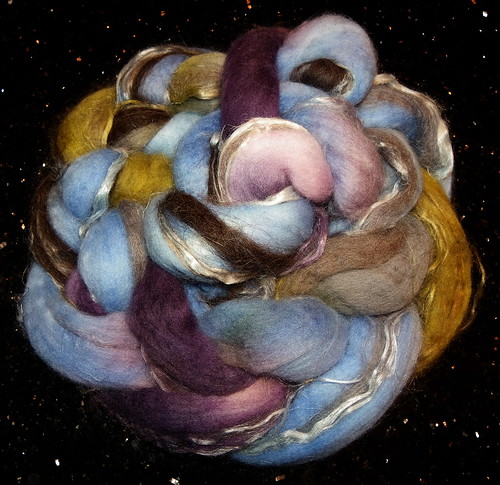
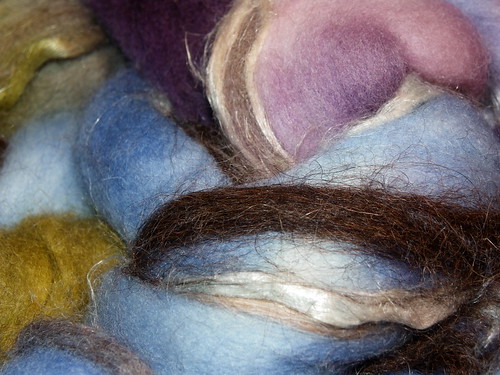 Alice-sold-
Alice-sold-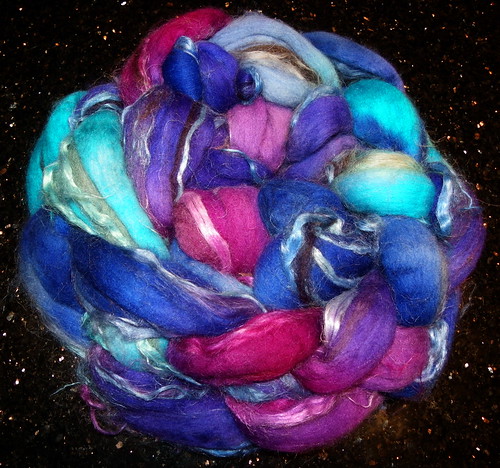
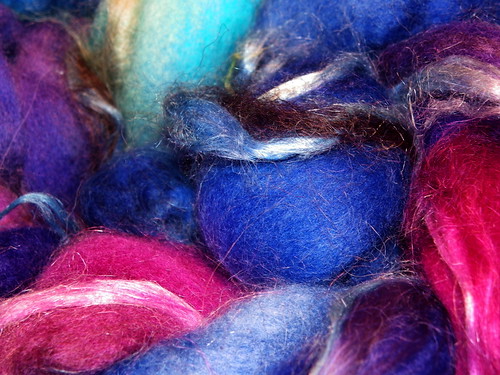 Cheshire Cat-sold-
Cheshire Cat-sold-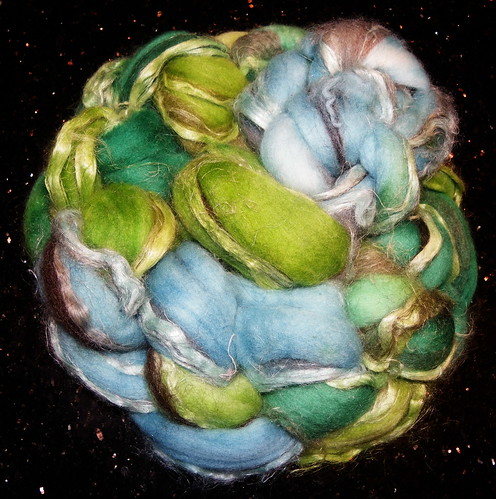
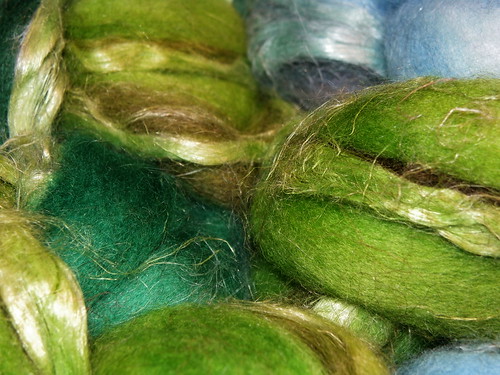 Dreamy Caterpillar-SOLD-
Dreamy Caterpillar-SOLD-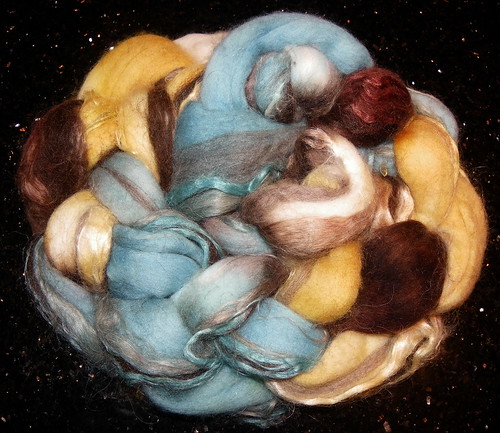
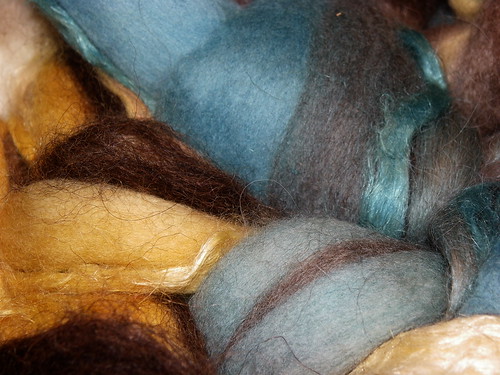 Humpty Dumpty-sold-
Humpty Dumpty-sold-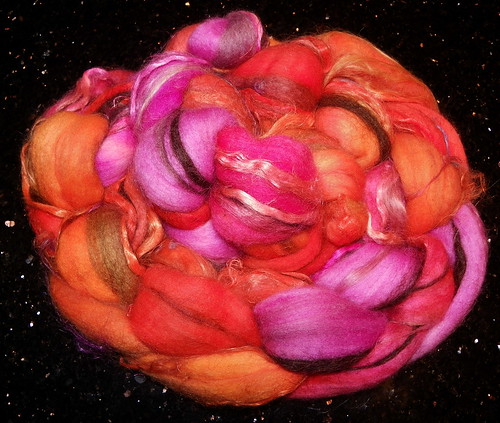
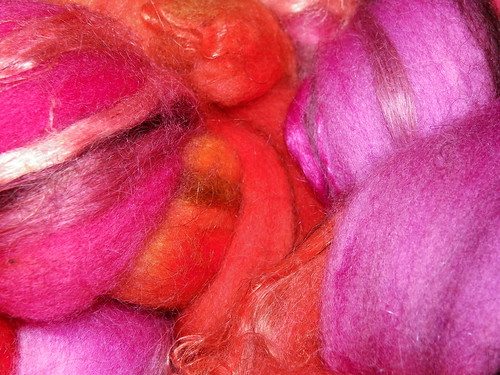 Mad Hatter-sold-
Mad Hatter-sold-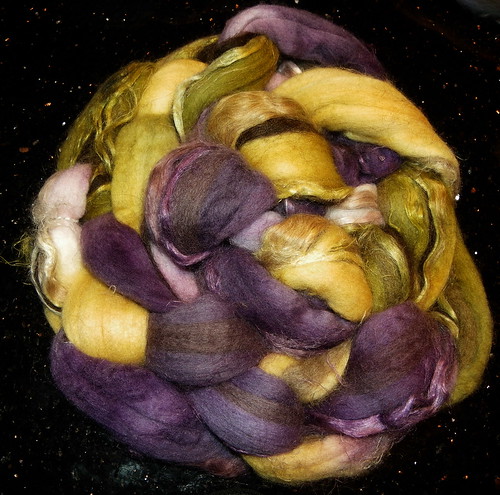
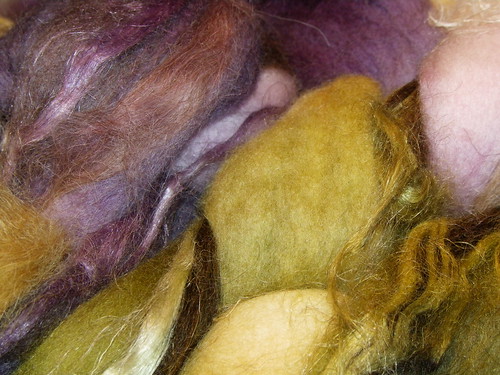 Mallymkun-sold-
Mallymkun-sold-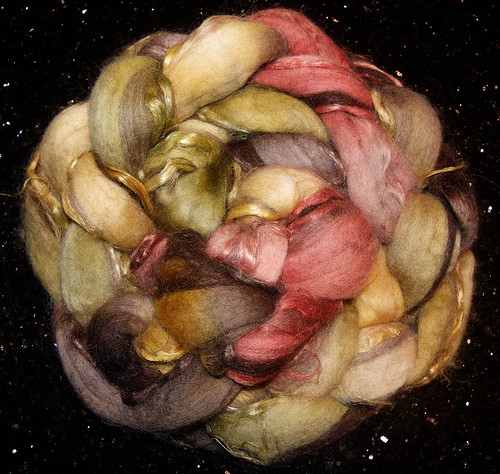
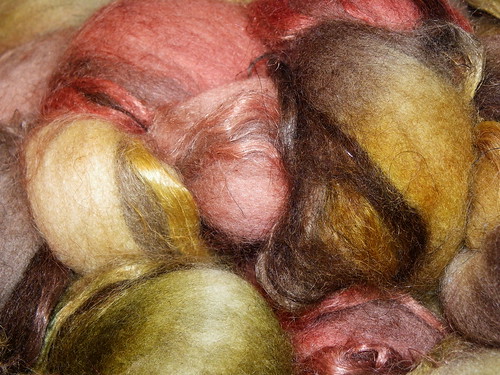 March Hare-sold-
March Hare-sold-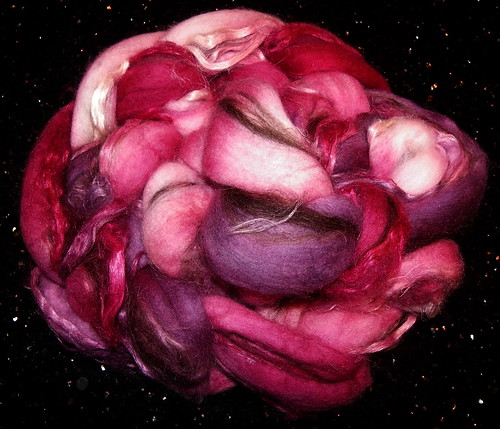
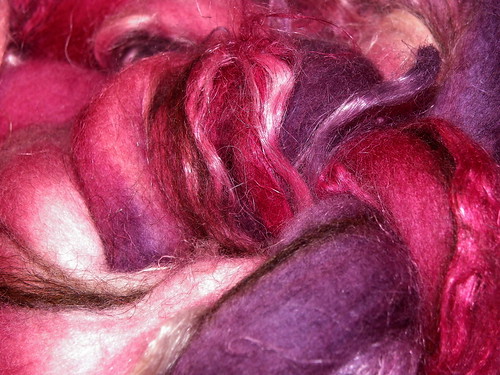 Red Queen-sold-
Red Queen-sold-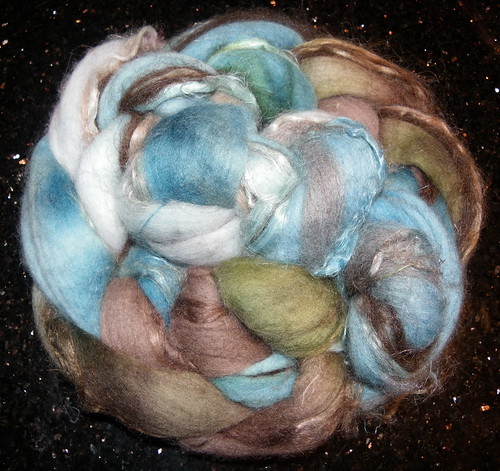
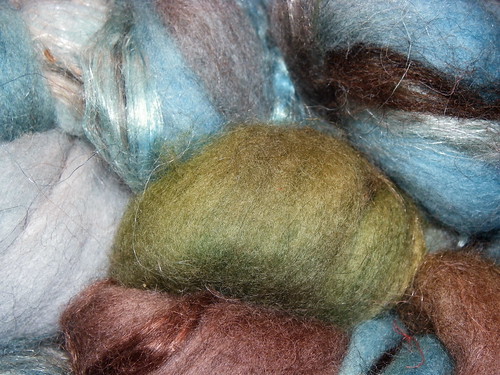 Through the Looking glass-sold-
Through the Looking glass-sold-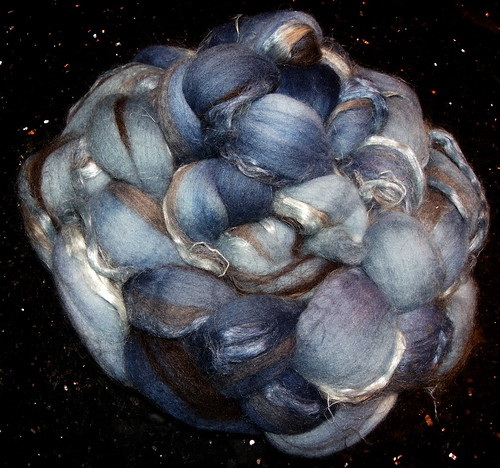
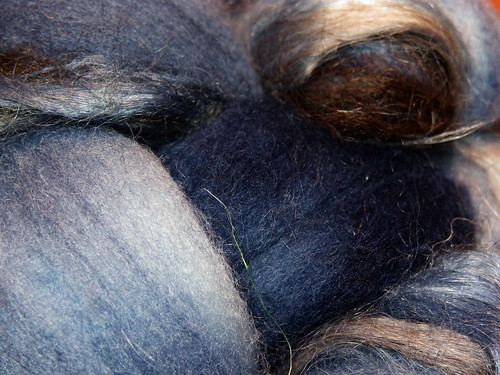 Time-sold-
Time-sold-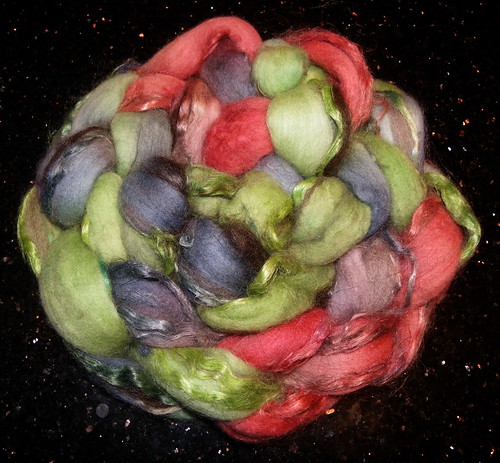
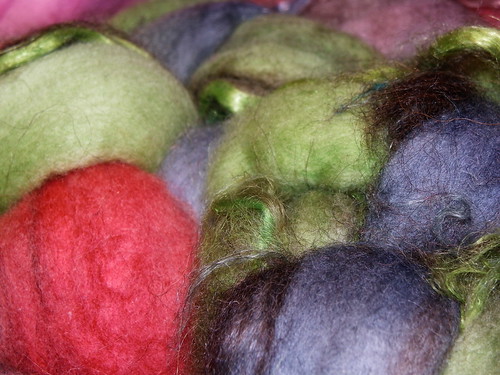 Tweedledee-sold-
Tweedledee-sold-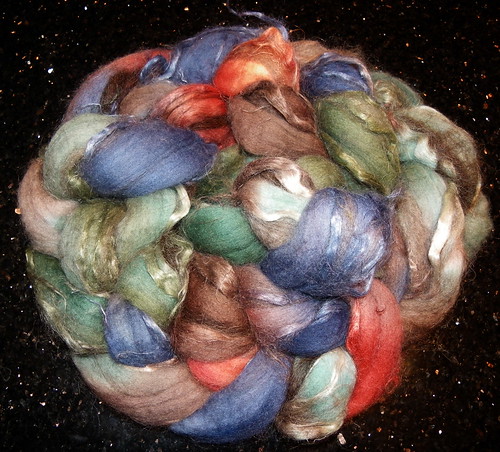
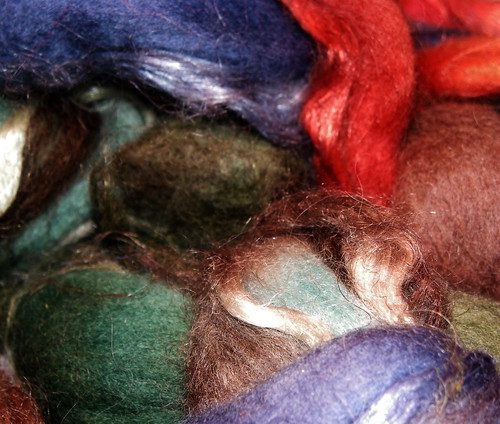 Tweedledum-sold-
Tweedledum-sold-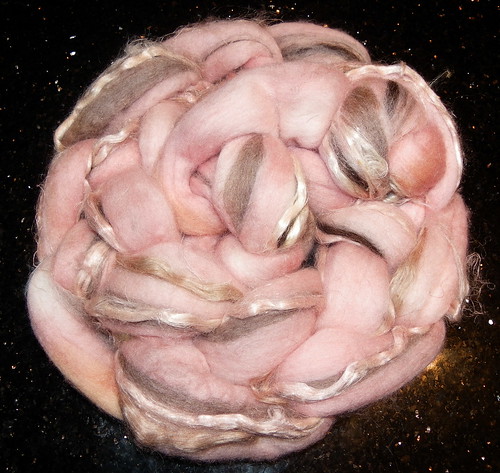
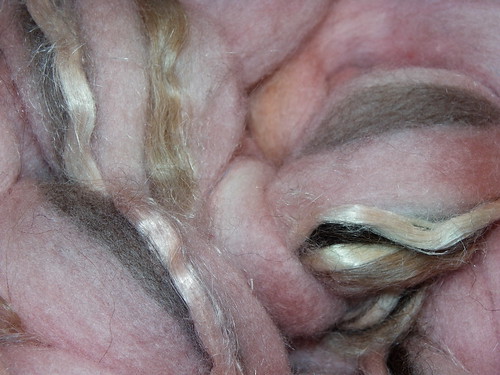 White Queen-sold-
White Queen-sold-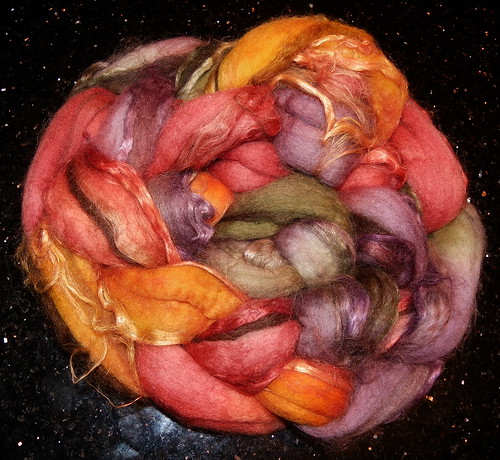
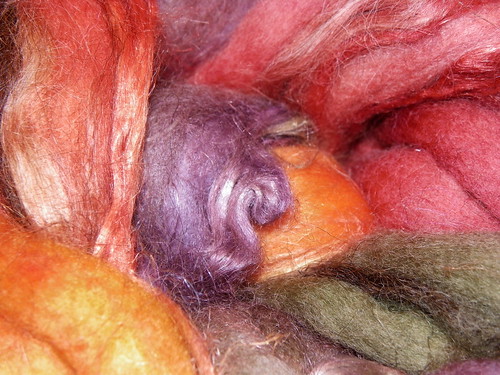 Zanick Hightop-sold-
Zanick Hightop-sold-
Special IxCHeL Gift Voucher

Want to give somebody something special and still let them pick out their fav colour or fibre blend? Well, search no more: I offer an IxCHeL gift voucher package that is so hard to resist you even want to buy one for yourself ..lol The Giftvouchere will be emailed to you or your friend with a unique number to quote when buying from my updates or at any of my markets. The Vouchers are valid for 1 year. Here’s the deal:
AU$25 Personalised Christmas giftvoucher Pack
A personalised Christmas giftvoucher, free post for the receivers first order in Australia (for overseas customers you can deduct AU$9 off your shipping cost!) and a badge
AU$50 Personalised Christmas giftvoucher Pack
Comes with a personalised Christmas giftvoucher, free post for the receiver's first order in Australia(for overseas customers you can deduct AU&9 off your shipping cost!) , a badge, a bunny $photo and last but not least some amazing fluffy stuff in a gift pack
AU$100 Personalised Christmas giftvoucher Pack
Comes with a personalised Christmas giftvoucher, free post for the receivers first order in Australia (for overseas customers you can deduct AU$9 off your shipping cost!), a badge, a bunny photo and last but not least some amazing fluffy stuff and yarn in a gift pack!
Just let me know what giftvoucher pack you would like to gift to a friend or yourself! And I will send you all the details.
Have a fun weekend Creating your Dreams!
Please don't hesitate to contact me at any time if you have any questions okay? Always happy to enable.
All my contact details are to be found at the end of this week’s blog entry.
Have fun !!!
Dates to put in your Calendar !!
The last two months of this year I have private workshops and spinning lessons on the calendar, fibre art projects and exciting work for the Home of HoP Couture ;-)
I will let you all know when there are pop up market stalls or spin ins planned again for next year as soon as I know them.
I will let you all know when there are pop up market stalls or spin ins planned again for next year as soon as I know them.
How To Order:
1. You can email me on ixchel at rabbit dot com dot au or ixchelbunny at yahoo dot com dot au
2. message me on facebook or ravelry where I am Ixchelbunny.
I will email you right back with all your order details and payment methods.
Any questions? Any custom orders for yarn or dyeing fibre? Please don’t hesitate to ask! Always happy to enable.
2. message me on facebook or ravelry where I am Ixchelbunny.
I will email you right back with all your order details and payment methods.
Any questions? Any custom orders for yarn or dyeing fibre? Please don’t hesitate to ask! Always happy to enable.
Thank you so much for your help and support !
RABBIT ON !
((hugs))
Charly




No comments:
Post a Comment